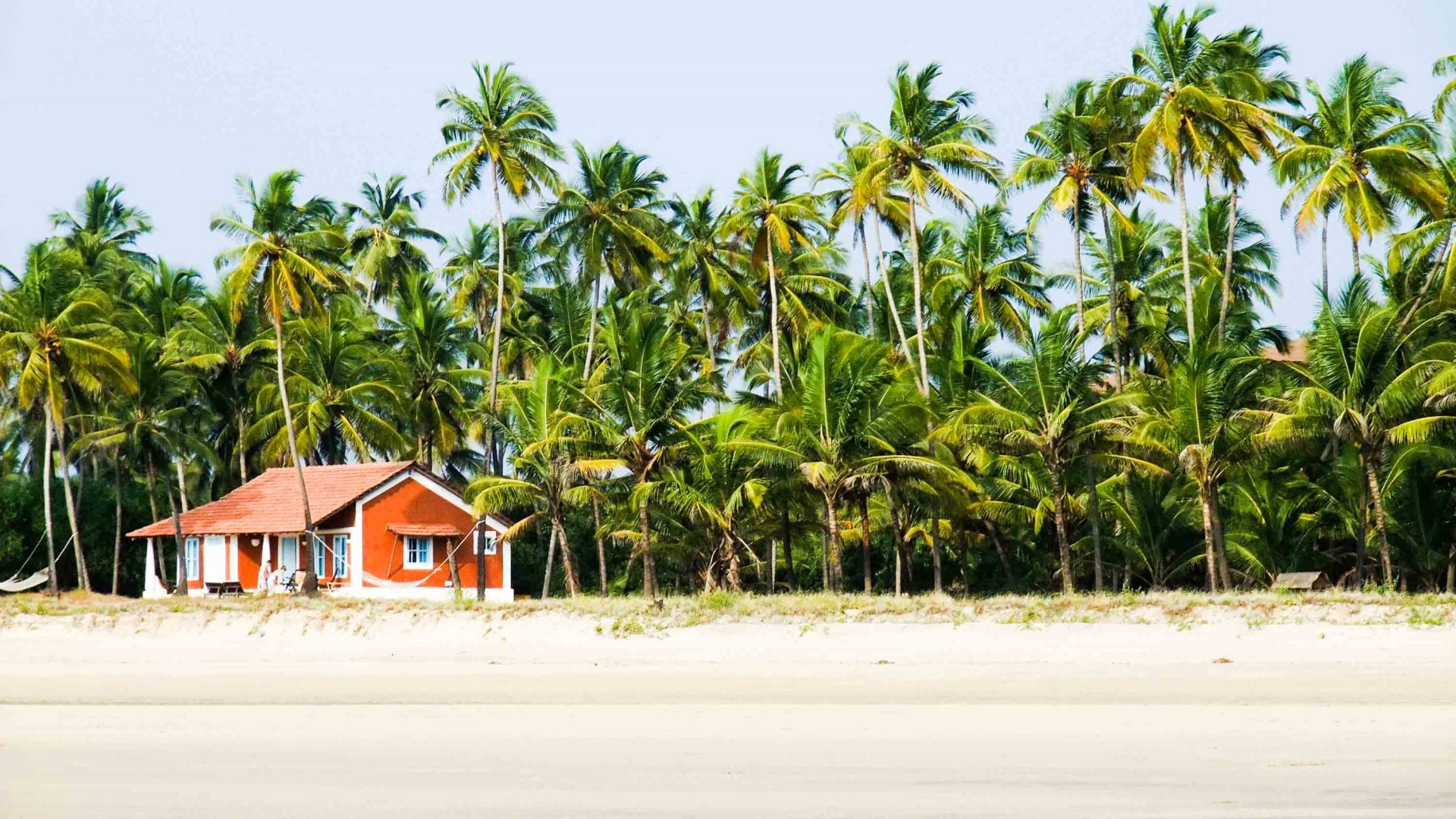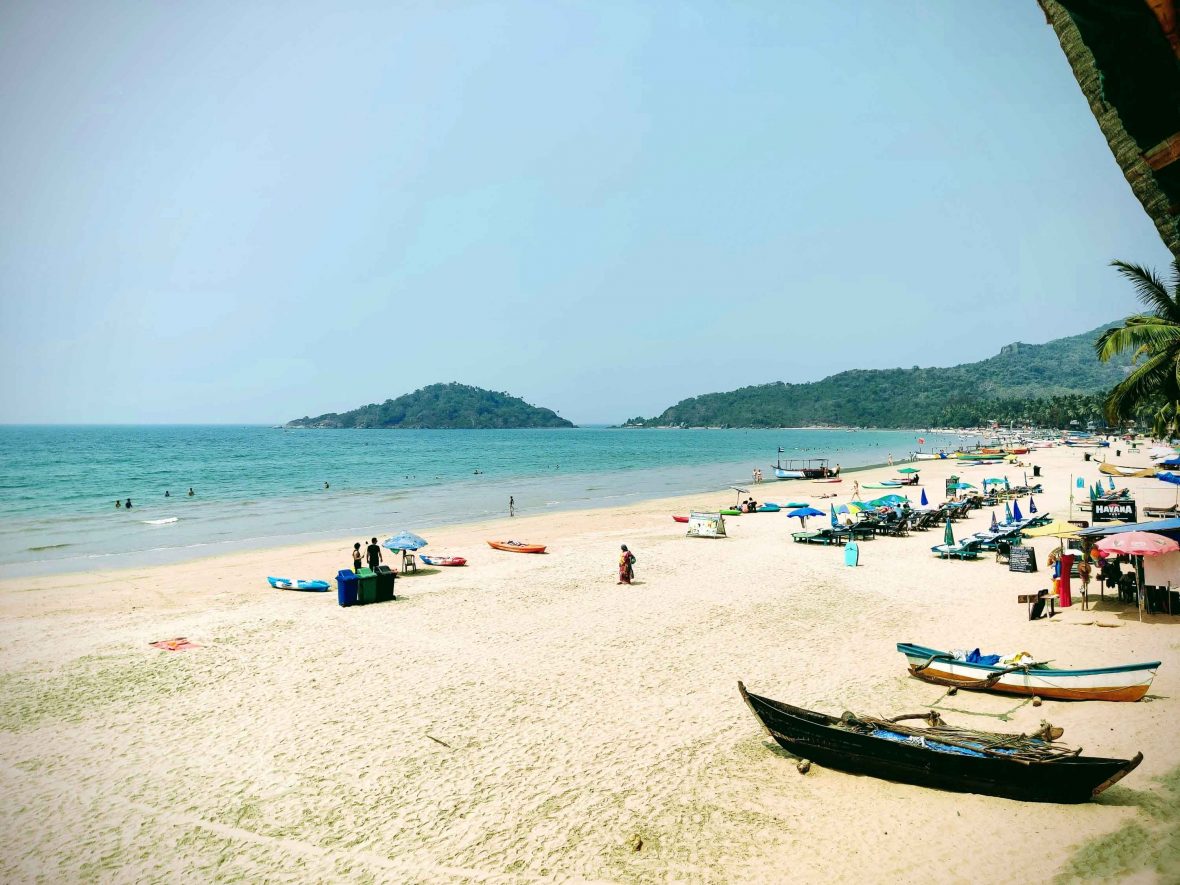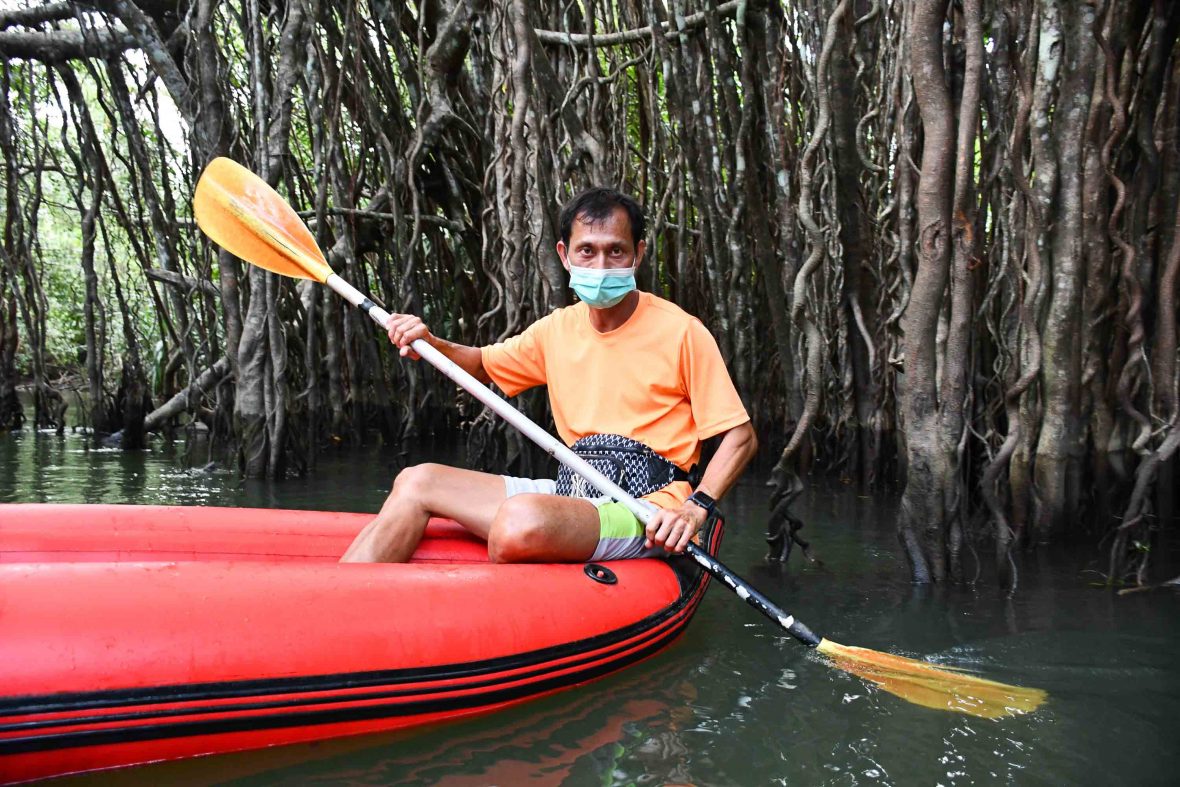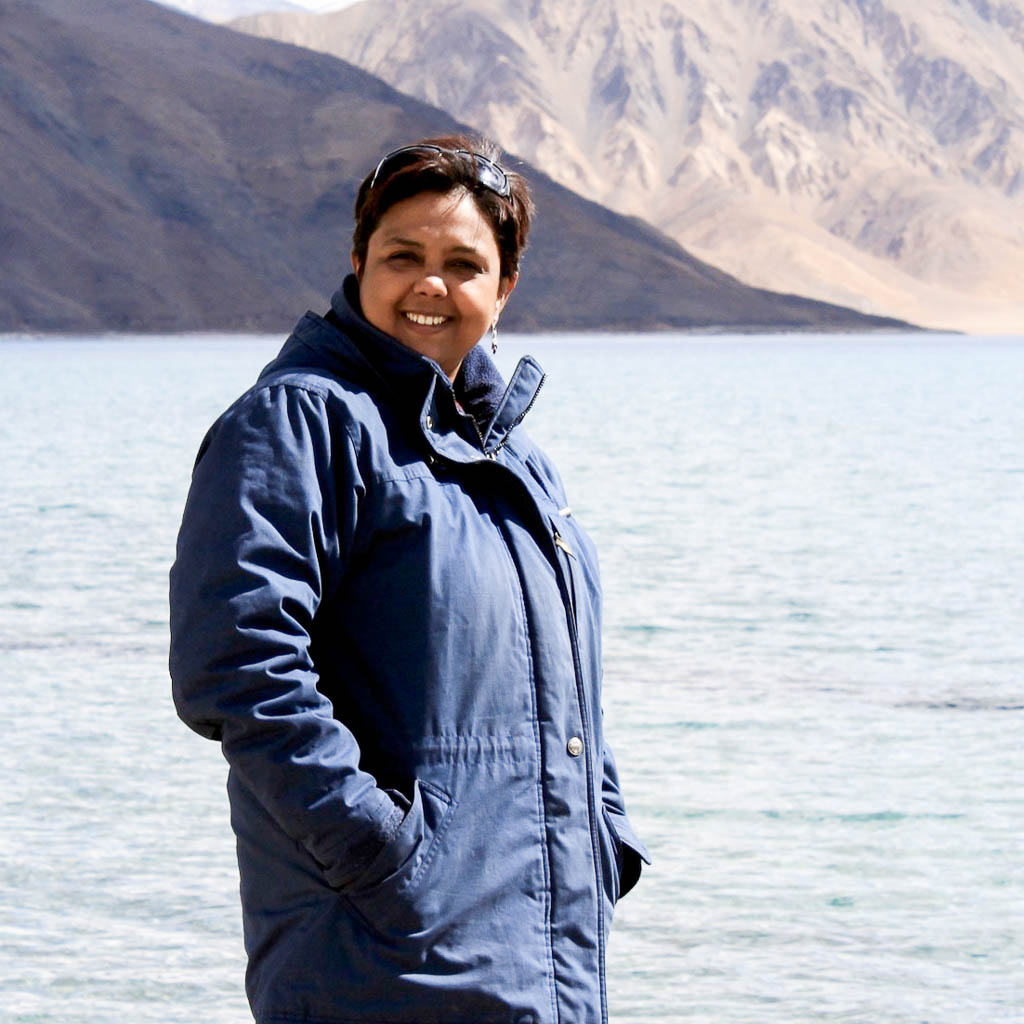
Is the growth of ecotourism projects in Goan hinterlands—the dense forest cover of Western Ghats—a good thing for the native community and wildlife? Or is it harmful? According to locals and experts, it’s both.


Is the growth of ecotourism projects in Goan hinterlands—the dense forest cover of Western Ghats—a good thing for the native community and wildlife? Or is it harmful? According to locals and experts, it’s both.
Visiting Goa—long synonymous with the ultimate Indian coastal vacation—is like stepping into an episode of a travel show.
You can snorkel in scenic bays, thaw under the sun inches away from the shore, and hike around, discovering crescent coves. In another part of the state, nature flourishes to bring about stretches of the misty deciduous forests of the hinterland. It’s here where a cluster of national parks mingle with the biodiverse UNESCO-awarded Western Ghats of India. Home to some of Asia’s rarest endemic species, the state is also widely considered a tourism success at a time when many destinations are reeling from the pandemic.
But a recent announcement to introduce ecotourism in the hinterlands revealed a different side of Goa, one that’s firmly entrenched in the plague of ecotourism that threatens the travel industry. In a place so heavily dependent on tourism, and where travel singlehandedly contributes to about 16 percent of the state gross domestic product, many in Goa welcomed the initiative.
But an overwhelming number of locals and environmentalists from across the country did not.

And here’s why: Goa is the smallest state on which a major part of the Western Ghats—an inland mountain range notable for being a global biodiversity hotspot—is critically positioned. This means that active land fragmentation can disrupt the continuity of the declared Ecologically Sensitive Areas (ESA).
If the forest cover is thinned or fragmented, it will no longer share an important corridor with neighboring states of Karnataka and Maharashtra. That would leave open the possibility of a negative impact on approximately 10,000 species of flora and fauna.
“Camping and trails inside such establishments mean changing the habitat to accommodate an activity, not the wildlife. It’s not natural for a leopard or elephant to be in an environment where people are clamoring all day.”
- Arvind Gowali, conservationist
The pandemic highlighted the unending impact of years of uncontrollable tourism, from land erosion to ever-increasing beach pollution and depleting forest cover. In doing so, it has sparked a nervous debate on how shaping forest reserves and sanctuaries to bring in more tourism will negatively affect both the state and the eco-sensitive regions. In this debate, the unchecked political system and a long history of unethical practices have forced the people to question the intention of such campaigns.
So for a destination facing an unending battle with overtourism, can an ecotourism strategy destroy the very same place it is trying to protect?
It was my seventh day in Panaji, Goa’s cosmopolitan capital on the Mandovi River. After spending a week reveling in the beach scene, I drifted inland on a ferry, riding through the estuarine mangrove habitat to reach Ilhas de Goa before walking past mangrove forest that surrounds the path to the Island of Chorão. The largest among the 17 islands in the northern region, it is the only place remaining in North Goa where you can be among the rural communities and see the only stretch of uncommercialized mangroves.
To give a better idea of figures, in 2020, incoming domestic and international travel accounted for over 3.3 million visitors, but post-pandemic, those figures steadily rose—Goa recorded more than 1.9 million tourists between March and May in 2022. And on average, the annual count can be more than eight million.
The Salim Ali Bird Sanctuary is one of seven places in Goa named as part of an eco-tourism project announced by state minister Vishwajit Rane. The proposal detailed a “thrust” to develop eco-tourism within the forest to “create a new ecosystem” to ensure more people can access the wildlife inside these parks.
We began to make way towards the sanctuary—named after Dr. Salim Moizuddin Ali, a prominent Indian ornithologist—to learn about why the smallest of all sanctuaries in the state is considered the one in most danger of succumbing to overtourism. With hundreds of tourists passing us by every 10 minutes, often forming a beeline to compensate for space and not tumble over, we slowly began to realize why this is a prevailing issue.
We continued for another mile as the path turned to a part-paved, part-dirt road, but without the densely packed forest around us. When we finally reached the gate of the protected sanctuary, the throngs of people I encountered became an appropriate preface for the story unfolding before me.
Inside there’s a confluence of sounds that shift easy from an eerie silence to the rumbling chaos of overlapping conversations. While some visitors were only peeking at the animals through the lens of their Instagram stories, most found themselves entranced by the wildlife. I found myself massaging my neck after a long day of craning at trees when a forest worker spotted me and offered to help me up a three-storied tower to sneak in a panoramic (and relaxing) view of the sanctuary before sundown.
“Because a large yacht has a bigger footprint than a smaller boat, but multiple small boats may have a bigger footprint than one large yacht, how do you decide what is ecotourism and what is not?”
- Puja Mitra, Terra Conscious
It’s ironic I was taking in the view from the top of watchtower that almost collapsed due to overtourism. In 2018, the sanctuary has to close, after the then-rusted and underfunded structure almost collapsed with tourists on board, endangering the lives of half-a-dozen visitors and forest offices.
Just like the Salim Ali Bird Sanctuary, the most protected reserves due for development are in landscapes high in biodiversity. Eastern Goa, a geographic region that forms most of the Western Ghats, has already seen systematic and unethical destruction of forestland to prioritize infrastructure—the same infrastructure that the government is planning for the upcoming ecotourism plan.
The idea of ecotourism as a catalyst to capitalize on untapped nature is not a new one, but Goa is determined to take it to the next level. By inviting people to walk through ecologically-sacred grounds—a once-in-a-lifetime opportunity to explore a part of UNESCO World Heritage Site that is one of the world’s 10 hottest biodiversity hotspots—they’re not only profiting from it but sensationalizing sensitive places to gain more profits than they from promoting other areas.
At Mhadei Wildlife Sanctuary—a relatively new protected area more than 30 miles from Panaji—I meet Arvind Gowali, a forest officer and conservationist. “It’s important to remember that ecotourism in this context is a business,” he tells me. “If you change the context to conservation, then the ecotourism strategy will limit contact with wildlife, limit the number of people who can visit the biodiverse regions, and only cater to non-invasive tourism.”
It’s something we don’t always consider when we read ‘eco-tourism’. “Camping and trails inside such establishments mean changing the habitat to accommodate an activity, not the wildlife,” he says. “It’s not natural for a leopard or elephant to be in an environment where people are clamoring all day.”
In the age of hyper-conscious travel where a holistic approach is becoming key to tourism, governments are walking the moral and ethical tight rope. Ecotourism, a positive approach aimed to promote responsible travel to natural areas and curb the unfortunate consequences can quickly become a double-edged sword. Without transparency and rigorous checks, even the most ambitious and virtuous form of travel, we now know, it can become the most destructive action we can take.
Puja Mitra, a social impact entrepreneur and founder of Terra Conscious—an award-winning, socially responsible conservation enterprise—often observes this conflict of revenue vs conservation on the frontlines.
“The scientific community is scared but loud, and so are the conservationists who failed to get their voice heard, and people like me who grew up here.”
- Varun Gopal, lguide/fisherman
“When commercial trawling started replacing small-scale fishing, many fishers turned towards dolphin/crocodile watching, or recreational fishing to make ends meet. Over time, with growing demand, the space today has commercial investors, migrant labour who may not be from coastal areas and has grown into an industry which has all types of vessels from yachts managed by corporates to small 10-seater boats owned by a local owner offering dolphin watching as an experience,” Mitra explain.
“Because a large yacht has a bigger footprint than a smaller boat, but multiple small boats may have a bigger footprint than one large yacht, how do you decide what is ecotourism and what is not?,” she asks. “The advantage of applying an ecotourism lens is to investigate these issues. The disadvantage is that unless you understand all the drivers of tourism in the state and factor all of that in when you are developing an agenda for ecotourism, it may become greenwashing.”

Many people have expressed concerns over the potential human-wildlife conflict, but there’s also acknowledgment that ecotourism can open the door to opportunities: People will get to learn about one of the world’s ten “hottest biodiversity hotspots”. There will be more funding to support the region. This may bring in more employment for the adjacent villages. It will bring about a platform to highlight a Goa unknown to the world.
But there’s another side to it as well. Gerard de Souza, a state correspondent for newspaper Hindustan Times, helped me understand the political aspect. During our conversation, he explained, “explained this through a socio-political lens.
“What the minister hasn’t said upfront is that several politically connected people have invested or are making plans for venturing into eco-tourism-related projects,” he tells me. “Abhijat Parrikar, son of former Chief Minister Manohar Parrikar, saw his plans for an eco-tourism project in Netravali while Pratapsingh Rane, father to the minister, has also sought permission to set up wooden cottages at the Querim village atop a hill known as Vagheri, a known tiger stomping ground in Goa.”
The history of Goa amply demonstrates that political morals and governing ethics have contributed to the rising public distrust when it comes to eco-tourism programs. The state authorities in Goa have a history of passing unvetted regulations that destroyed acres of green cover in the past. Union Ministry of Environment, Forests and Climate Change (MoEF&CC) has shown marked reluctance in abiding by independent scrutiny of its forests. Goa minister Vishwajeet Rane’s apparent mocking of environmentalists has naturally stirred a public uneasiness.
When I returned to Panaji, the headquarters of the North Goa district—a destination at the crossroads of all sanctuaries making it a perfect place to learn about the interplay between hinterland and tourism—I started getting up early to explore and learn about the nature around the surrounding Campal Forest Department on the Mandovi River. One day, on an expedition to learn the name of the sweet-smelling trees inside the encampment, I met Jivan, a 49-year-old forest officer who’s been working here for the past 11 years.
Jivan can recall the scientific name of all the unique flora and fauna that are found in Goa. “The depletion of forestland is nothing new,” he tells me, “but if ecotourism can start the conversation about sustainability and evoke a sense of responsibility among people, it is worth a shot.”
I thought about our conversation on my way back to the homestay I’d rented near Miramar Beach, a gently arching beach that forms the longest stretch of coastline in Goa. It’s one of the most idyllic, palm-lined strips, and home to many people who work and live in the surrounding protected habitats. But when I stepped onto the beach, I could see a white line of plastic formed where the bluest of waves reach the limit.
I’d arranged to take part in a beach clean-up with a group and the next morning, met Varun Gopal, a 43-year-old local guide and fisherman. Following a summer of political unrest sparked by the unethical cutting of trees in Mollem National Park, he decided to gather willing tourists for beach cleaning projects across Goa. It was both a personal mission and a demonstration of protest, something Mr Gopal, who grew up playing in the forests, hoped to model for the young generation. While the nine of us met as strangers, our discussions on modern travel and shared ideas about climate-friendly tourism brought us closer, so much so that we decided to merge our itineraries. In an odd reversal of events at the beach, which is often the end goal for those who are travelling here, became our beginning.
Mr Gopal handed us all a ‘grabber’, a tool specifically designed to pick up litter in and under the sand, and introduced us to the task at hand: Walk six feet away from the beach and stop plastic waste at the source—basically, pick up anything and everything that can pollute the waters. “I don’t think we can control the outcome or influence it, but we can be responsible even in a thick fog of unknown,” he told us. “The scientific community is scared but loud, and so are the conservationists who failed to get their voice heard, and people like me who grew up here.”

I asked myself if I’d have understood the true significance of the hinterland if I weren’t allowed to go in and explore myself. I can see how camping among wildlife or trekking inside lush forest will result in an uptick in footfall. It also seems to be a fiscally responsible idea—unlocking a different part of Goa to people while simultaneously monetizing the existing hotspots—to explore undeveloped territories which can benefit regional tourism.
Inspiring the crowd to learn more about the Western Ghats will also alleviate pressure from beaches, allowing the government to act on impending issues such as marine pollution. As defined by the International Ecotourism Society, “responsible travel to natural areas that conserve the environment, sustains the well-being of the local people, and involves interpretation and education” can be a powerful force. But the challenge is to build a system free of commercial and conservation bias, a system that is currently unsustainable in India.
As we begin the clean-up, Varun reminds us If, “This is not just to save the marine ecosystem. It’s to ensure that the ‘eco’ in eco-tourism doesn’t become a myth.” And it’s exactly that—preserving the eco credentials of any project, no matter who’s involved or high up it goes—that should be at the heart of any initiatives in Goa, or anywhere.
***
Adventure.com strives to be a low-emissions publication, and we are working to reduce our carbon emissions where possible. Emissions generated by the movements of our staff and contributors are carbon offset through our parent company, Intrepid. You can visit our sustainability page and read our Contributor Impact Guidelines for more information. While we take our commitment to people and planet seriously, we acknowledge that we still have plenty of work to do, and we welcome all feedback and suggestions from our readers. You can contact us any time at hello@adventure.com. Please allow up to one week for a response.

Sneha Chakraborty is a multimedia journalist and photographer based between India and the Netherlands with a focus on ethical explorations, culinary jaunts, and stories at the intersection of sustainability and adventure tourism. Her work has appeared in Lonely Planet, National Geographic Traveller, Vogue and other publications.






Can't find what you're looking for? Try using these tags: